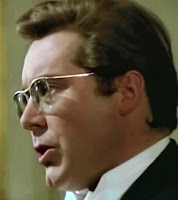I had an experience today that I find very
difficult to describe.
It was a drab old day in Sydney, not cold but with
lowering clouds and sporadic rain showers. Not a day you expect to be
overwhelmed and left breathless and weeping in the space of a
minute or two.
 |
| Grey day today: Sydney Opera House from the MCA |
As I walked out of Wynyard Station I was assailed
by the scent of Narcissus flowers, harbingers of spring. I am still
not quite used to Narcissus flowers being sold when autumn is barely over and 'winter' has not quite gripped us, but then what we call winter in Sydney is more like
spring in harsher climates.
This was what I was thinking as I strode
off to the the Museum of Contemporary Art. I was going there to see 'Telling Tales', an exhibition
that includes a sung work Sonic Blossoms by artist Lee
Mingwei. A classically trained singer (there are several who take
turns) chooses a random member of the public and sings a Schubert
song to them. I am acquainted with one of the singers and was hoping to
hear her sing.
 |
| Goowoolem Gijam – Gija plants by Shirley Purdie |
In the nominated third floor exhibition room there
was a large work called Goowoolem Gijam – Gija plants by
Aboriginal artist Shirley Purdie that took up most of one wall. The
other works in the room were by artist Emily Floyd, comments on the
Soviet Gulag which, as the wall plaques declared, resonate with
Australia's offshore internment camps and policies affecting remote
Aboriginal communities.
Some time after midday a tall smartly dressed man
with a rather dramatic coat appeared (baritone Andrew Moran I
discovered afterwards). He led a woman from the assembled
onlookers to sit on a chair in the middle of the room, then withdrew
to stand perhaps eight meters away to deliver his song.
I am not sure if it was the already
emotionally-charged space, whether it was Schubert's music/words or
whether it was Andrew Moran's extraordinary baritone voice but in the
space of four minutes I was an emotional wreck. Is that too strong an expression? After the song I walked out of
the MCA weeping and emotional, heading for a quiet corner where I
could sit and think and figure out what had happened to me.
Eventually I wrote a note (writing helps me digest experience) and
emailed it to myself.
This is what I wrote:
My body feels as if it is too small for my heart which has
suddenly grown four sizes bigger. Half an hour ago I was was present
when Andrew Moran sang a Schubert song to an audience member of the
MCA. I was not the person sung to but despite that, this single song
touched me in a way one is seldom touched.
It is true, I weep
when I hear Liebestod at the end of Tristan and Isolde, but that is
to be expected after four hours going through an emotional wringer.
The Schubert song was only a couple of minutes long, but sung in a
way that reached right past any defenses I might have had and left me
breathless and weeping.
Now I am sitting
quietly in a corner with a consolatory beer, trying to get a grip on
myself before I go to the ACO/ Giovanni Sollima concert. Will the
concert make my malady worse?
Now it is evening. As I returned home on the train
I thought about this extraordinary day that has been almost
impossible to describe. (More on the concert later.) Ex PM Paul Keating struggles to explain the effect
of Mahler's music has on him; Wagnerians join societies to search for
words to describe their feelings; I write a blogpost in an effort of
describe a Schubert Lied. We all fail because there are no words.
Addendum: here is the song I heard..
Du bist die Ruh sung by Peter Scheier:
 Have you ever heard Nessun Dorma sung to the tune of Funiculì, Funiculà? No? Well people who attended the Roberto Alagna concert at the Sydney Opera House last night are one up on you.
Have you ever heard Nessun Dorma sung to the tune of Funiculì, Funiculà? No? Well people who attended the Roberto Alagna concert at the Sydney Opera House last night are one up on you.




